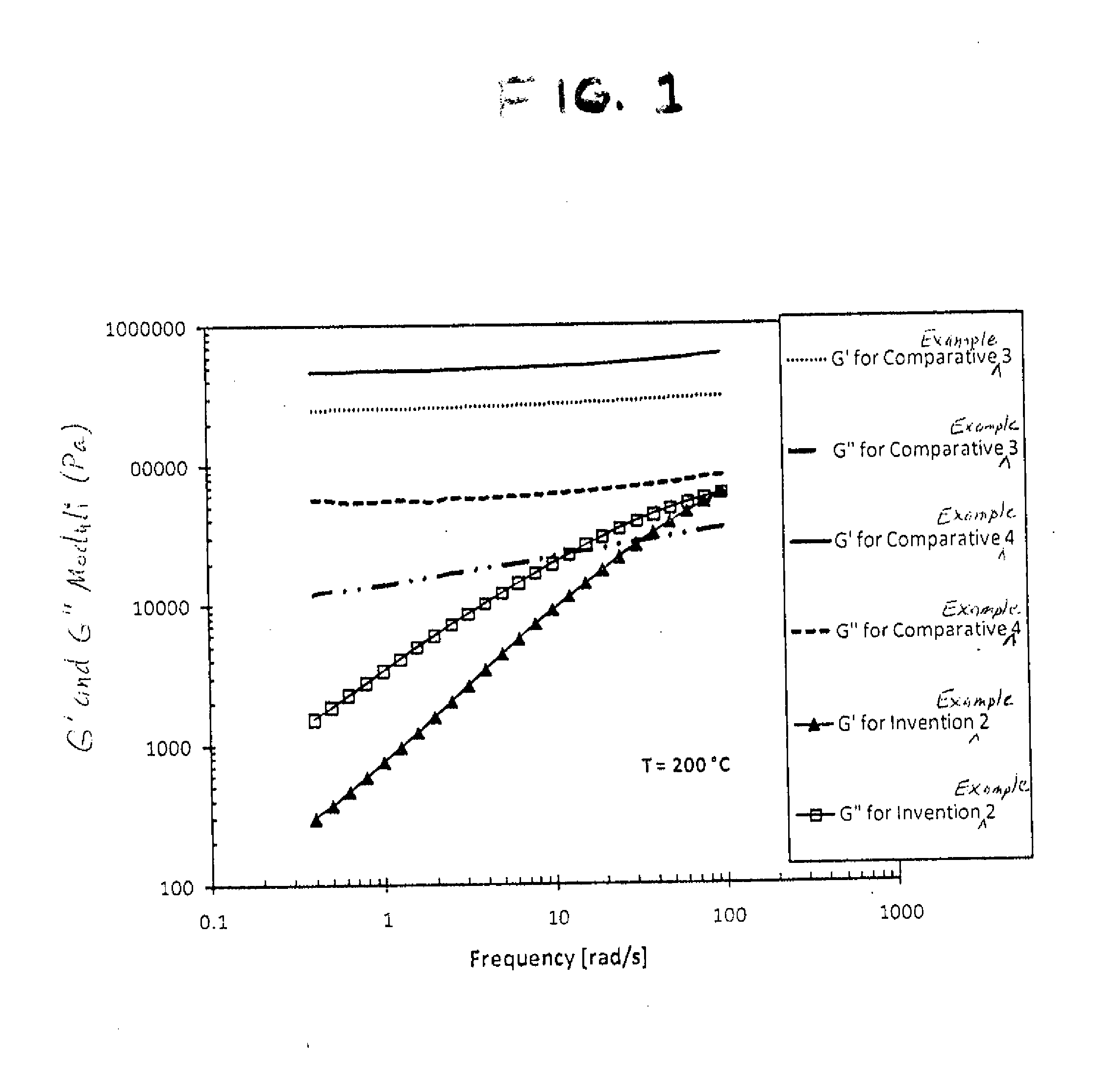Laser-engraveable flexographic printing precursors
a technology of flexographic printing and precursors, which is applied in the field oflaserengravable flexographic printing precursors, can solve the problems of not being able to be easily re-melted or re-dissolved to produce a new flexographic printing plate precursor, large amounts of material must be removed, and melt edges cannot be removed or at least not completely removed, etc., to achieve easy recycling, good elasticity and compression recovery, and easy image
- Summary
- Abstract
- Description
- Claims
- Application Information
AI Technical Summary
Benefits of technology
Problems solved by technology
Method used
Image
Examples
invention example 1
[0162]Thermoplastic elastomeric (TPE) nanocrystalline polyolefin pellets (36 g, Notio™ PN-2060 from Mitsui Chemicals America, Inc. Rye Brook, N.Y.) were combined with carbon black powder (2.3 g, Mogul® L from Cabot Corp Boston, Mass.) and melt mixed in a Brabender mixer (ATR-2120 equipped with 3 heat zones and high shear roller type blades) at 200° C. for 7 minutes, removed from the mixer, and allowed to cool. This resulted in a 94 weight % of Notio™ PN-2060 and 6 weight % of carbon black. A sample (3.5 g) of this mixture was introduced into an aluminum mold with a sheet of 300FN Kapton® on one side for ease of release, and was pressed into the shape of a flat plate using a Carver press (model #3393) set at 3000 psi (20 megaPascals) at 220° C. for 5 minutes. The assembly of the mold and its contents were then cold-pressed in another Carver press that was set at 20 megaPascals pressure with no heating for 30 minutes. The resulting laser-engraveable flexographic printing plate precurs...
invention examples 2-8
[0168]Flexographic printing plate precursors of this invention having a laser-engraveable layer were prepared using melt molding, laser engraved using a 5.3 watt, 1064 nm pulsed single mode ytterbium fiber laser, and subjected to the swell test, the same as described in Invention Example 1, except that the resulting ratio of TPE nanocrystalline polyolefin to carbon black was 93:7 by weight, and the product designation of the nanocrystalline polyolefins (Notio™ products were from Mitsui Chemicals America, Inc. Rye Brook, N.Y. and Engage™ products were from Dow Chemical) was varied, as shown below in TABLE I. The values for the relief image depths engraved when the laser fluence was 102 J / cm2 are also recorded in TABLE I.
Rheological Test for Invention Example 2
[0169]A flexographic printing plate precursor sample of the thermoplastic elastomeric nanocrystalline polyolefin was prepared the same as described in Invention Example 2. A 25 mm diameter disc was punched out of the precursor s...
invention example 9
[0176]Nanocrystalline polyolefin pellets (30.7 g, Notio™ PN-20300 from Mitsui Chemicals America, Inc. Rye Brook, N.Y.) were combined with carbon black powder (2.9 g, Mogul® L from Cabot Corp Boston, Mass.) and calcium carbonate (CaCO3, 8.4 g, Multiflex MM from Specialty Minerals Bethlehem, Pa.) by melt mixing in a Brabender mixer (ATR-2120 equipped with 3 heat zones and high shear roller type blades) at 220° C. for 10 minutes at 45 rpm, removed and allowed to cool. This resulted in 73 weight % of Notio™ PN-20300, 7 weight % of carbon black, and 20 weight % of calcium carbonate. A sample (3.5 g) of this resulting mixture was melt-molded into a flexographic printing plate precursor of this invention and laser-engraved using a 5.3 watt, 1064 nm pulsed single mode ytterbium fiber laser as described for Invention Example 1. The values for the relief image depths engraved when the laser fluence was 102 J / cm2 are recorded below in TABLE II.
PUM
| Property | Measurement | Unit |
|---|---|---|
| weight % | aaaaa | aaaaa |
| weight % | aaaaa | aaaaa |
| weight % | aaaaa | aaaaa |
Abstract
Description
Claims
Application Information
 Login to View More
Login to View More - R&D
- Intellectual Property
- Life Sciences
- Materials
- Tech Scout
- Unparalleled Data Quality
- Higher Quality Content
- 60% Fewer Hallucinations
Browse by: Latest US Patents, China's latest patents, Technical Efficacy Thesaurus, Application Domain, Technology Topic, Popular Technical Reports.
© 2025 PatSnap. All rights reserved.Legal|Privacy policy|Modern Slavery Act Transparency Statement|Sitemap|About US| Contact US: help@patsnap.com

